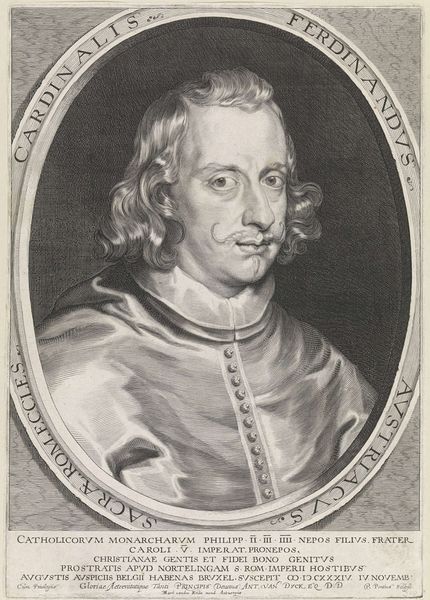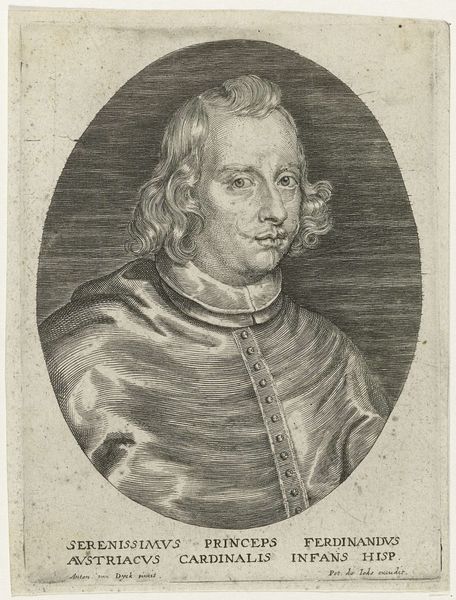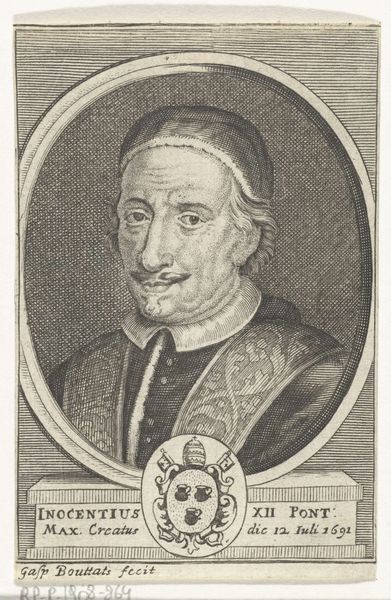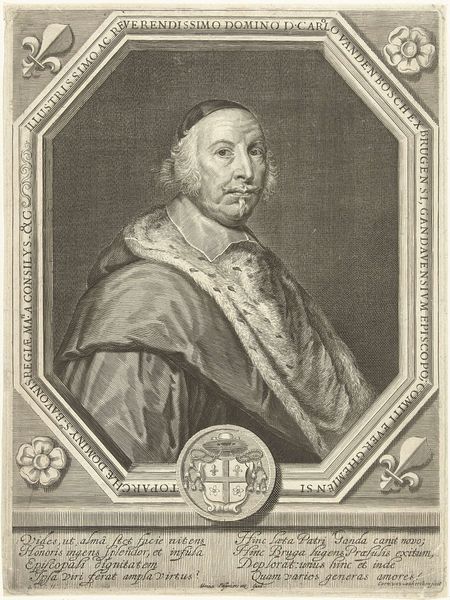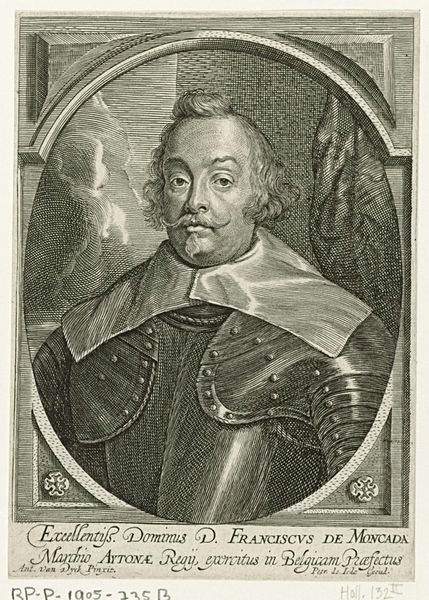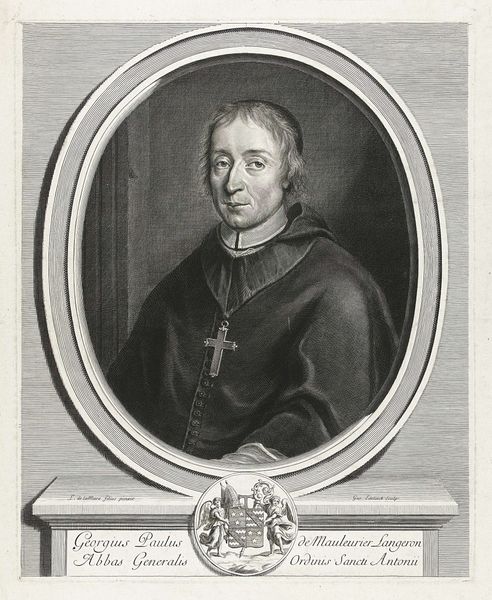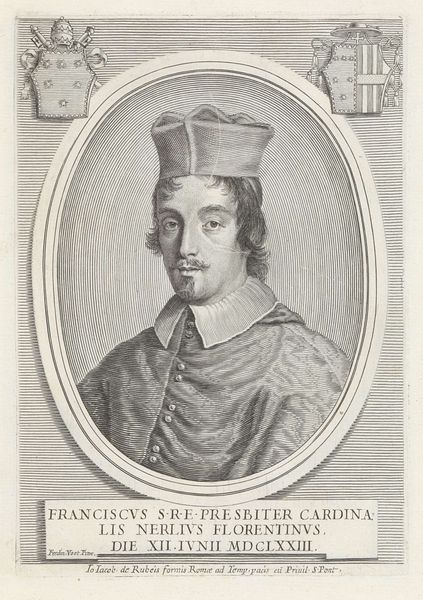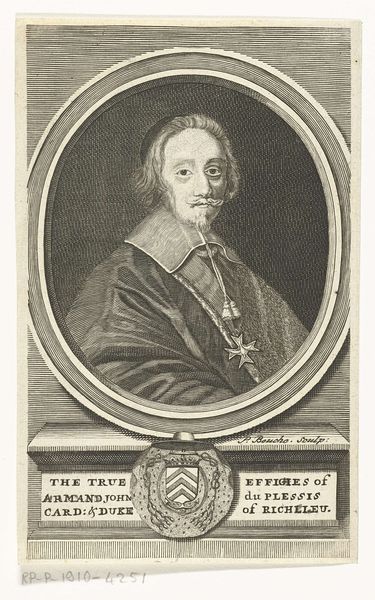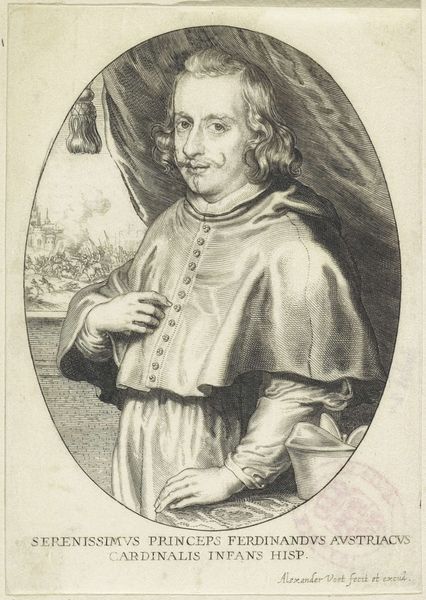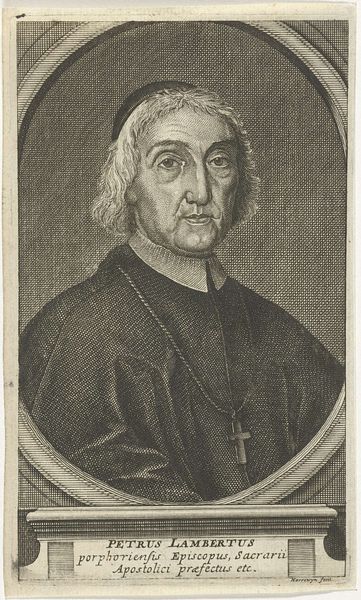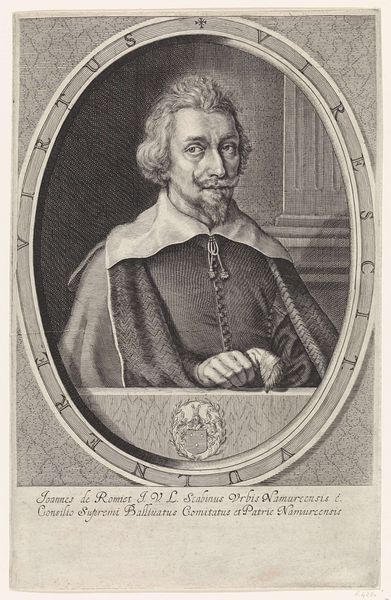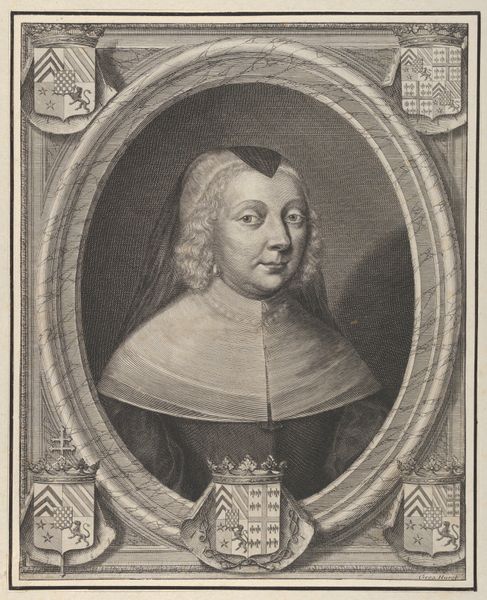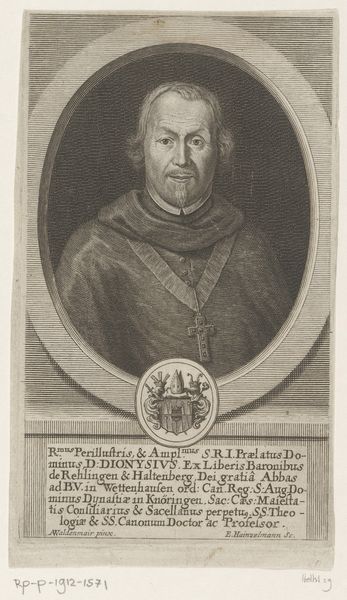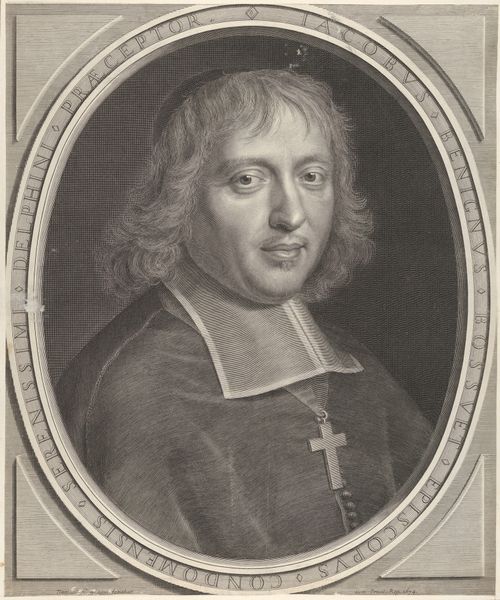
print, engraving
#
portrait
#
baroque
# print
#
engraving
Dimensions: height 134 mm, width 99 mm
Copyright: Rijks Museum: Open Domain
Curator: This image by Pieter de Jode II, created sometime between 1628 and 1670, is an engraving, a portrait of Ferdinand van Oostenrijk, also known as Ferdinand of Austria. Editor: My first impression is how unsettling the expression feels despite the formal composition. He seems almost melancholic, gazing directly at the viewer, trapped, almost, in that decorative oval. Curator: Indeed, that penetrating gaze! Portraits are, of course, potent carriers of symbolic weight, announcing power, lineage, and character. Note the meticulous detail given to his clerical garb and aristocratic features. These baroque elements, such as the oval framing and rich folds in the cape, subtly highlight his dual role. Editor: Exactly. And how can we separate this depiction from the religious and political turbulence of the period? Here we have Ferdinand, an infante of Spain, also a cardinal. That position came loaded with ideological baggage during the Counter-Reformation. Curator: It's fascinating how printmaking allowed for widespread dissemination of these constructed images of power. Engravings acted almost as standardized icons. And look how his belonging to a bloodline is communicated: the hair and Habsburg jaw so typical in family portraits of that era. The iconography of power is carefully assembled and clearly readable to contemporary audiences. Editor: Right. I see his positionality creating tensions, almost contradictions, of a life caught between the Church and the aristocracy. The image serves to legitimize the rule, yet somehow, his expression speaks more clearly of human anxiety. What are the costs of those performative roles? It urges viewers to not just to consider who this man was, but how sociopolitical contexts often forced one's path and fate. Curator: Ultimately, whether consciously or unconsciously, Jode crafted more than just a portrait, the artwork is an invitation to unravel the layers of identity shaped by social expectations and internal life. The picture makes us remember those dynamics exist across the centuries. Editor: Yes, I’ll remember Ferdinand's expression of vulnerability that resists even the grandeur surrounding him. He challenges that easy kind of hero worship of power.
Comments
No comments
Be the first to comment and join the conversation on the ultimate creative platform.
